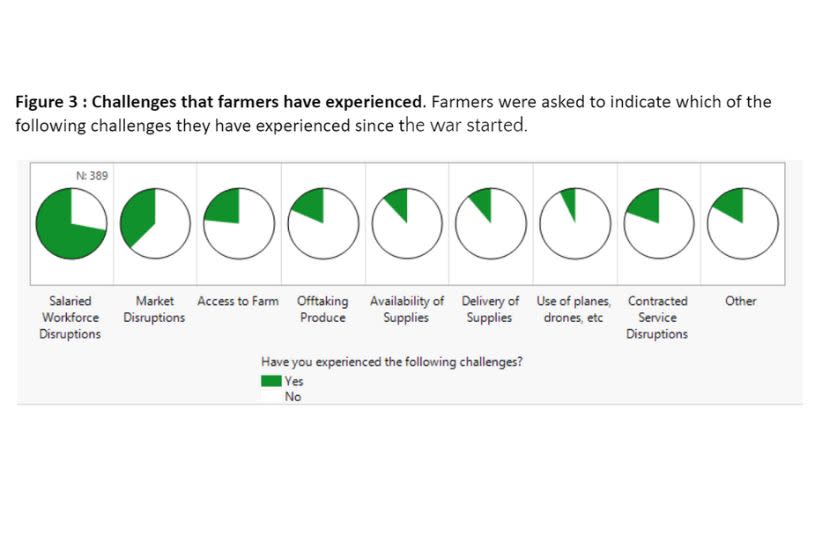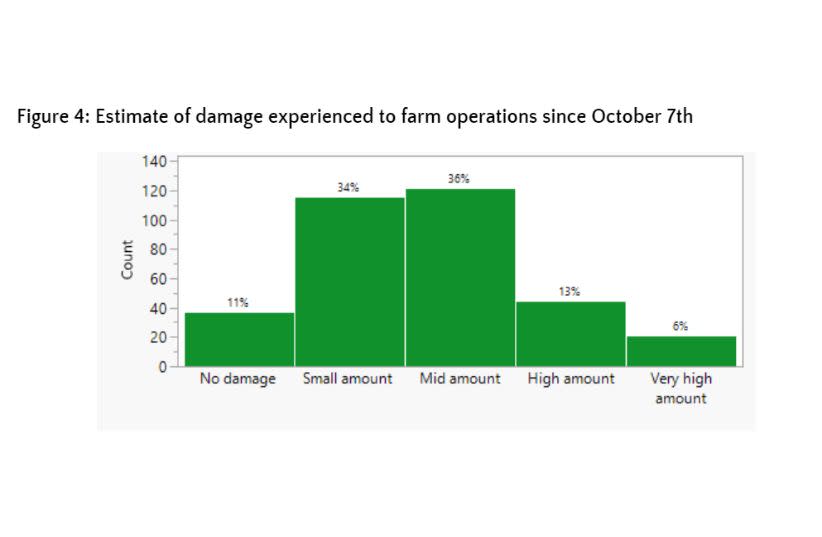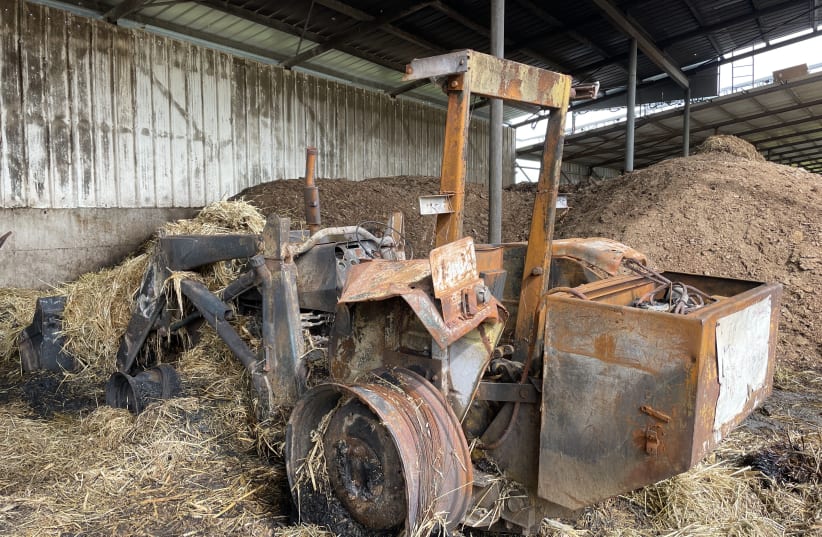Nearly all Israeli farmers have experienced disruptions to their operations since the October 7 Hamas massacre and the start of the Gaza War, according to a survey by the Migal Galilee Research Institute.
“The Gaza war is having a devastating impact on Israeli agriculture,” said Dr. Adam Abramson, a research group leader in the field of agricultural economics at Migal and the survey’s initiator.
The survey of 389 farmers, published on Thursday, showed that 89% of them had experienced some form of damage to their farms, and almost all (96%) expect to experience additional harm in the coming three months.
In the Gaza area, more than three-fourths (77%) of Israeli farmers expect high to very high levels of damage.


The farmers are experiencing several challenges. The top three are: disruptions to the workforce, market disruptions and problems accessing their farms.
Specifically, of the respondents, 72% said they were experiencing disruptions to their workforce.


Three-quarters (76%) of farmers said they expect a loss of agricultural production, with the average loss estimated at around 35%. In the Gaza periphery, this average loss was twice as much, at 70%.
Nearly all farmers (86%) expect a loss of income. While the national average is estimated at around 35%, the average loss is estimated to be twice as much (69%) in the Gaza area.
Can the industry be saved?
“The industry’s ability to recover will depend on our ability to implement creative solutions that assure a steady workforce, that open new marketing channels, and that secure daily access to the farms themselves,” Abramson said.
The survey asked for suggestions to improve the situation, including recommended government policies. Among the recommendations were defining food security as a national priority, reducing barriers to marketing and allowing direct marketing, subsidizing Israeli workers, reducing the price of water, subsidizing other inputs like pesticides, and more.
The survey was administered from October 26 to November 5 via social networks and Israeli government agricultural channels.
